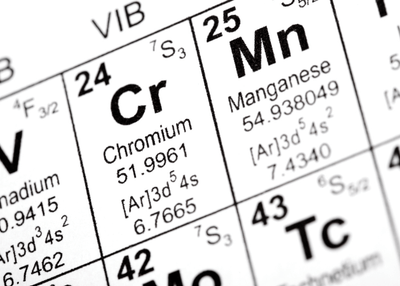Analies Dyjak | Policy Nerd
For Hydroviv’s assessment of Milwaukee, Wisconsin’s drinking water, we collected water quality test data from the city and the U.S. Environmental Protection Agency. We cross referenced their water quality data with toxicity studies in scientific and medical literature. The water filters that we sell at Hydroviv are optimized to filter out contaminants that are found in Milwaukee’s drinking water.
Where Does Milwaukee Source Its Drinking Water?
Milwaukee sources its drinking water from Lake Michigan. This surface water source has had a long history of pollution, including recent lawsuits involving Chromium 6 releases from an abutting steel facility.
Chromium 6 In Milwaukee’s Drinking Water
Chromium 6 is a highly toxic metal that is currently unregulated by the EPA. In recent years, Milwaukee has had a major problem with this dangerous contaminant. Chromium 6 pollution is associated with metal processing, tannery facilities, chromate production, stainless steel welding, and pigment production. This years water quality report for Milwaukee detected levels of Chromium 6 as high as 0.2 parts per billion. This concentration is 10 times higher than the concentration determined to have a negligible impact on cancer risk. EPA has acknowledged that Chromium 6 is a known human carcinogen through inhalation, but is still determining its cancer potential through ingestion of drinking water. Lung, nasal and sinus cancers are associated with Chromium 6 exposure. Ingestion of extremely high doses of chromium 6 compounds can cause acute respiratory disease, cardiovascular, gastrointestinal, hematological, hepatic, renal, and neurological distress which may result in death.
Lead In Milwaukee's Drinking Water
In recent years, Milwaukee has had a problem with lead in drinking water. Lead enters tap water through old lead service pipes and lead-containing plumbing. 10% of sites that were tested for lead had concentrations over 7.2 parts per billion. The highest concentration detected in 2017 was 130 parts per billion, which is a whopping 8.6 times higher that the Federal Action Level of 15 parts per billion. Environmental Protection Agency, Center for Disease Control and American Academy of Pediatrics all recognize that there is no safe level of lead for children. These health and regulatory organizations are trying to reduce the allowable limit to 1 part per billion, so a concentration of 130 parts per billion is of serious concern. Additionally, these measurements may not be a true indication of your tap water if your home has lead plumbing or lead fixtures. Treated water leaving the plant may be in compliance with loose EPA standards, but could become contaminated once it enters older infrastructure. Houses built before 1986 were most likely built with lead plumbing and lead fixtures. Lead exposure can cause developmental issues, lowered IQ, and damages to the kidneys and brain.
Perfluorinated Compounds In Milwaukee's Drinking Water
This years water quality report for Milwaukee included test data from six Perfluorinated Compounds (PFCs). Perfluorinated Compounds are associated with firefighting foam, non-stick cookware, Scotchguard and other solvents from manufacturing. The two PFCs that are the most well known and the most researched are Perfluorooctanoic acid (PFOA) which was detected at 2.1 parts per trillion and Perfluorooctane-sulfonic acid (PFOS) which was detected at 2 parts per trillion. The Agency for Toxic Substances and Disease Registry recently recommended setting a Minimum Risk Level of 20 parts per trillion for both of these chemicals. These data are preliminary and the effects to human health are still unknown. This category of chemicals are “emerging contaminants” which means they are thought to pose a potential threat to human health and the environment, but haven't yet been regulated. Perfluorinated Compounds contribute to environmental contamination largely due to the fact that they are highly resistant to degradation processes, and thus persist for many years in water, air and can enter the food chain via bioaccumulation in certain animal species.
Chloramine In Norman’s Drinking Water
While most municipalities use chlorine as the primary drinking water disinfectant, Milwaukee’s drinking water is disinfected with chloramine. Chloramine is primarily responsible for what many customers report as the “bad taste” or “pool smell” of tap water. Unlike chlorine, chloramine does not dissipate if a container of water is left in the refrigerator overnight. Most one-size-fits-all water filters use filtration media that doesn’t do a great job removing chloramine, but the filters that we design and build at Hydroviv for Milwaukee use a special filtration media that is purposefully designed to remove chloramine.
It’s important to note that only a handful of contaminants are required to be included in annual Consumer Confidence Reports, and that there are hundreds of potentially harmful unregulated contaminants that aren’t accounted for. If you’re interested in learning more about water filters that have been optimized for Milwaukee’s tap water quality, feel free to visit www.hydroviv.com to talk to a Water Nerd on our live chat feature or send us an email at hello@hydroviv.com.
Other Articles We Think You Might Enjoy:Lead Contamination In Drinking Water 5 Things To Know About Chromium 6 In Drinking WaterPerfluorinated Compounds In Drinking Water





